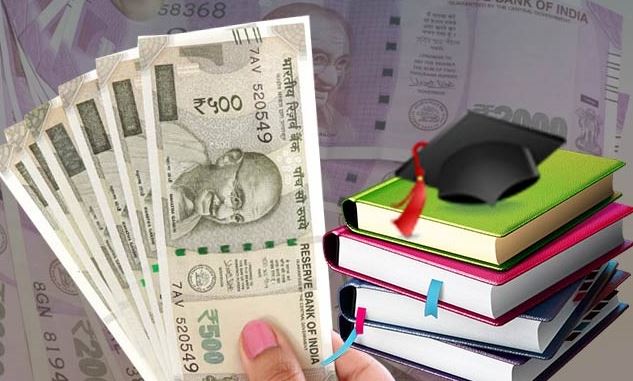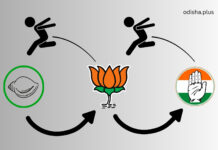Gopabandhu Mohapatra

The deserving students need financial support to pursuing higher professional or technical education. It is for this reason Indian Banks Association (IBA) initiated the education loan, to those students who have obtained admission to career-oriented courses like – medical, engineering, management etc. The aim is “no deserving students should be stopped to pursue their dreams due to lack of money”.
The Education Loan Scheme extended by the banking industry is designed in such a manner that it supports a socially backward and economically poor student and for that reason it is covered under “priority sector” lending of banks. It aims to provide need-based finance to meritorious student for taking up higher education. The precondition is that the student has to obtain admission to an eligible course through a merit based selection process. An education loan is a type of loan designed to help students to pay for associated fees, such as tuition, books and supplies, and living expenses.
In order to alleviate the financial stress of the parents facing hardship in paying a high rate of interest, provision has been made to make poor students get higher education and bring down their financial burden. The Government of India has launched a scheme to provide full interest subsidy to students belonging to Economically Weaker Sections during the period of moratorium i.e. Course Period plus one year or six months after getting job, whichever is earlier, for pursuing at any of the approved courses of studies in technical and professional streams, from recognised institutions.

For loans upto Rs 4 lakh, the lender doesn’t seek a guarantor or security. For loans of Rs 4 to Rs 7.5 lakh, a third-party guarantor is sufficient, while for loans exceeding Rs 7.5 lakh, banks insist on collateral security, which is usually landed property. Most of the education loan amounts of PSBs are below 4 lakh, which implies that these loans do not require a collateral and are unsecured.
After the completion of the course, those taking education loans get a moratorium of six months to a year, before they start repaying. In the case of an engineering course, students get four years (the course duration), along with an additional year, to start repaying. The repayment has to start a year after the course is over, even if the student doesn’t manage to secure a job. Once the repayment starts, the borrower can avail of benefits under Section 80-E of the Income-Tax Act.

Under section 80(e) of the Indian income tax act, a person can exempt the amount paid against the interest of the education loan – either for self or for his/her spouse or children – for eight years from the years, he starts to repay the loan or for the duration the loan is in effect, whichever is more.

About 90 per cent of students availing education loan are from engineering streams. The high incidence of failure in examinations, such as that in engineering courses, also creates a large number of overdue loans. In the recent years the students claim that they are unable to repay it due to unemployment. A senior executive director of a public sector bank said there has been not much job creation in recent years and that students are unable to service loans due to delays in finding employment. In many cases, salaries are not sufficient to ensure repayments.
Contrary to the above, Education loans by some people are viewed increasingly as a financial assistance, which need not be repaid. There are borrowers who simply do not pay, in spite of getting lucrative jobs. A student who completed his B.E. about seven years ago obtained a mere Rs. 40,000 as education loan. He is working in Bangalore and is drawing a monthly salary which is more than the total loan amount. But he is refusing to repay it, laments manager of a nationalised bank .
The percentage of default is found to be higher in loans without security and guarantor. Banks often face problems in tracking the beneficiaries after the course. The experience shows that the repayment is better among students from middle class families, as they fear what the society would think of them, if their non repayment came to light. But persons from poor families are least bothered about such issues. Persons from financially well-off families are influential, making it difficult to get the loan repaid.

Of late poor repayment of education loans, has been a source of major concern for banks. It is learnt that education loans to the tune of about Rs. 6500 crore have turned into Non Performing Assets (NPA) in government and private sector banks. Data shows, as on February 2018, total education loan outstanding stood at Rs 70500 Crore, against Rs 72000 Crore in February 2017, a fall of 2 per cent. and NPAs in education loan of public sector banks as on March, 2017 was Rs 5191 Crore, which comes to 7.67 per cent of the outstanding education loan. Experts say that corrective measures need to be taken by the government to control the situation. Despite inviting the defaulters for one time settlements with attractive waivers in the loan, repayment of education loan is poor.
At present with nearly 9% of education loans being declared as non-performing assets (NPAs), public sector banks in India are now faced with the challenge of understanding the reasons for the defaults and taking corrective measures. The total outstanding portfolio under education loan had fallen by 2.2% as of June 2019 year-on-year basis. Education loans disbursed under priority sector norms fared worse. The decline in study loans has been consistent for the last two years. It fell by 1.4% in June 2018 compared to the previous year in overall portfolio, while under priority sector segment the drop was 1.9%.

Officials in nationalised banks said that they continue sanctioning education loans and are increasing education loan disbursement every year, despite the poor repayment by defaulters, to ensure that deserving students are not affected.
(Mr. Gopabandhu Mohapatra is a retired banker and writes on a variety of subjects with a focus on Banking and Finance. He can be reached at gopabandhumohapatra@yahoo.co.in)






















Rightly summerised by the author. That there are 3 types of borrowers. Middle , poorer and influential. Once the students get educated and understand the various nuances of banking rules only middle class are a little prestige conscious about society rebuttal and pay. The other two category somehow shy away to be honest and under the cover of various pleas avoid and delay to pay back and some times change their address to make the banker trace the borrower. Those who get overseas appointments never bother to intimate the banker. The more they get educated with support from banks try to avoid payment ( i.e he may become educated but not civilized). Bankers should continue the scheme and civilize the existing borrowers about the benefit of loans and chances of future prospective borrowers getting hassle free loans upon repayment of the existing loans by these borrowers. Schemes prepared with good intentions should not be taken for granted to forget once availing the bemefits.
Well Explained.The banks provide number of repayment options depending on the courses,duration,repayment method ,etc.
So before getting a suitable education loan,make sure that you go through all the terms and conditions to remove financial tensions.